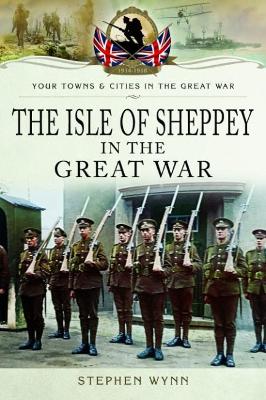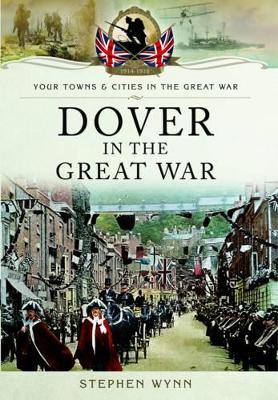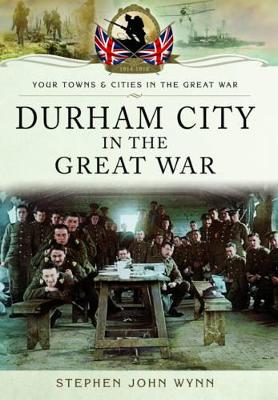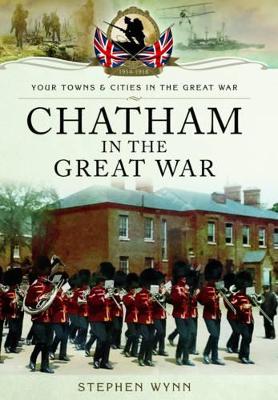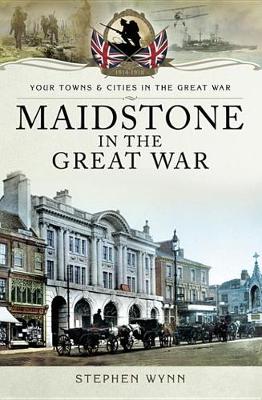Towns and Cities
6 total works
The Isle of Sheppey, although not a heavily populated area, played an extremely important part in Great Britain s war effort on the home front throughout the four and a half years of the First World War. In doing so, Sheppey provided protection for the Thames Estuary, the River Medway and the naval shipyards at both Sheerness and Chatham. Its defensive emplacements largely responsible for acquiring the nickname locally of the 'Barbed Wire Island.' One of its main claims to fame in relation to the years of the First World War would have undoubtedly been in relation to aviation. The island had been a hive of activity in relation to flying since the beginning of the twentieth century, when the Royal Aero Club came to Leysdown, making it the first airfield in England. What became Eastchurch Aerodrome was where the first pilots of the Royal Naval Air Service were trained, making it the first military flying school in the country. The Short brothers also had an aircraft factory at Eastchurch where they designed and built their own aircraft, some of which would be used during the First World War.
The Isle of Sheppey also boasted another aircraft factory, which was situated at Shellbeach on the east coast of the island, an emergency landing strip at Harty on the south east side of the island, and a balloon station at Sheerness. The First World War certainly saw the Isle of Sheppey rise to the occasion and add to its long and illustrious military history. The part it played went a long way in enhancing the island s reputation of having a dogged determination to do what needed to be done for the greater good in the nations time of need.
The Isle of Sheppey also boasted another aircraft factory, which was situated at Shellbeach on the east coast of the island, an emergency landing strip at Harty on the south east side of the island, and a balloon station at Sheerness. The First World War certainly saw the Isle of Sheppey rise to the occasion and add to its long and illustrious military history. The part it played went a long way in enhancing the island s reputation of having a dogged determination to do what needed to be done for the greater good in the nations time of need.
Situated on the south coast of England, geographically and strategically, Dover more than played its part in the First World War. It was from its harbour that the many vessels of the Dover Patrol set about preventing German ships from using the English Channel. It was undoubtedly one of the most important Royal Naval units that Britain had during the First World War. Because of its important defensive roll, Dover was identified as a legitimate and relevant target by the German authorities. As a result, German Zeppelin's and Gotha aircraft subjected Dover to 113 aerial attacks, dropping 185 bombs in the process. The first of these raids took place on Christmas Eve, 1914; this was also the first time a German bomb had been dropped on British soil. The last raid was on 24 August 1918, in which twenty adults and three children were killed. The local residents who, for whatever reason, were unable to enlist in the military during the war, but who still felt the desire and obligation to serve their King and country, were able to do so in organisations such as the Dover Volunteer Training Corps.Most towns had similar units, and their members carried out some sterling work on the Home Front.
By the end of the war, Dover and its people had sustained through testing and difficult times. Like every community throughout the nation, they had paid a heavy price. They had been as close to the war as it was possible to be, without actually being on the Front Line. Ships had sailed from its harbour to engage the enemy, and wounded soldiers had returned to the same harbour. Its men had gone of to fight in the war and, sadly, 721 of them never came back.
By the end of the war, Dover and its people had sustained through testing and difficult times. Like every community throughout the nation, they had paid a heavy price. They had been as close to the war as it was possible to be, without actually being on the Front Line. Ships had sailed from its harbour to engage the enemy, and wounded soldiers had returned to the same harbour. Its men had gone of to fight in the war and, sadly, 721 of them never came back.
Durham was, and still is, one of the country's oldest and best-loved cites. The very name was synonymous with dedication, dependability and determination. Men from the city answered the call to arms with an eerie normality, no matter what their age or social class. Many had been miners before the war and had spent their working life down a pit, but just as many had been teachers. Others were students at the Durham School, one of the most prestigious in the land, going on to further greatness at Durham University. When the announcement of war was made, they all enlisted to do their duty for King and country. They asked nothing in return, despite knowing the inherent dangers of what they were about to do. They carried on regardless, selfless in their readiness to give to a greater cause. There was a similar determination amongst the city's people. For some that meant working for the local Voluntary Aid Detachment or the Durham Volunteer Training Corps, whilst still going about their day job. They knew that no matter how hard things were for them, it was much more trying for their sons, brothers, husbands, uncles and other loved ones who were fighting on the Western Front.Hundreds went off to fight in the war: men who had been born in the city, who lived and were educated in the city, and men who had worked in the city.
Some 360 of them never made it home. They are gone, but never forgotten.
Some 360 of them never made it home. They are gone, but never forgotten.
Chatham played a very important part in the nation's Great War effort. It was one of the British Royal Navy's three 'Manning Ports', with more than a third of the town's ships manned by men allocated to the Chatham Division. The war was only 6 weeks old when Chatham felt the affects of war for the first time. On 22 September 1914, three Royal Naval vessels from the Chatham Division, HMS Aboukir, Cressy and Hogue, were sunk in quick succession by a German submarine, U-9. A total of 1,459 men lost their lives that day, 1,260 of whom were from the Chatham Division. Two months later, on 26 November, the battleship HMS Bulwark exploded and sunk whilst at anchor off of Sheerness on the Kent coast. There was a loss of 736 men, many of whom were from the Chatham area. On 18 August 1914, Private 6737 Walter Henry Smith, who was nineteen and serving with the 6th Battalion, Middlesex Regiment, became the first person to be killed during wartime Chatham. He was on sentry duty with a colleague, who accidentally dropped his loaded rifle, discharging a bullet that strook Private Smith and killed him. It wasn't all doom and gloom, however.Winston Churchill, as the First Lord of the Admiralty, visited Chatham early on in the war, on 30 August 1914.
On 18 September 1915, two German prisoners of war, Lieutenant Otto Thelen and Lieutenant Hans Keilback, escaped from Donnington Hall in Leicestershire. At first, it was believed they had escaped the country and were on their way back to Germany, but they were re-captured in Chatham four days later. By the end of the war, Chatham and the men who were stationed there had truly played their part in ensuring a historic Allied victory.
On 18 September 1915, two German prisoners of war, Lieutenant Otto Thelen and Lieutenant Hans Keilback, escaped from Donnington Hall in Leicestershire. At first, it was believed they had escaped the country and were on their way back to Germany, but they were re-captured in Chatham four days later. By the end of the war, Chatham and the men who were stationed there had truly played their part in ensuring a historic Allied victory.
Folkestone became one of the most important British towns during the First World War. Through its harbour, an estimated 10 million troops and nurses either departed from or arrived back in England between 1914 and 1919. For those leaving it was, for the most part, to fight on the battlefields of the Western Front. For those returning, it was either because they had been wounded or that they were coming home for some well-earned leave. Because of its geographical location along the south coast, the town was always going to be heavily involved in the course of the war. Shorncliffe camp saw the arrival of Canadian soldiers, infantry who had come to practice in its purpose-built trenches, and cavalry units who put their horses through their paces on its open grounds. As well as this, there was an influx of Belgian refugees who arrived in the town, having escaped the tyranny of an advancing Germany Army. Most stayed for the duration of the war, enjoying the hospitality and friendship of local people who had taken them in with open arms. With the town being a hive of military activity, the people of Folkestone went about their business as best they could.For many this included worrying about the wellbeing of a loved one who had gone off to fight in the war, hoping that they would remain safe but not knowing if they would ever see them again.
It wasn't just on the Western Front, however, that death reared its ugly head. On one occasion it happened in Folkestone, in what has become known as the Tontines Street Air Raid. Seventy-one men, women and children were killed and another ninety-four were injured this German air raid, which took place on 25 May 1917. This book is a poignant testimony to those people as well as the men who didn't make it back.
It wasn't just on the Western Front, however, that death reared its ugly head. On one occasion it happened in Folkestone, in what has become known as the Tontines Street Air Raid. Seventy-one men, women and children were killed and another ninety-four were injured this German air raid, which took place on 25 May 1917. This book is a poignant testimony to those people as well as the men who didn't make it back.
Maidstone in the Great War tells the remarkable story of this Kent county town's immense contribution to the Great War effort from the outbreak of war in 1914, to the long-awaited Allied victory in 1918. Maidstone has a long and illustrious military history - it even had its own Civil War battle, dating back to 1648 - and with the onset of the First World War, its civilians, like thousands of communities up and down the country, sent their men off to fight for their king and country. The town paid a hefty price as it lost nearly 900 of its young men. The harbinger of death catered for all strands of society, from the richest to the poorest, from those who toiled in the fields, to the loftiest of society. The book looks at the war year by year and how it directly and indirectly affected Maidstone. As more and more of its young men were killed and wounded, everyday life, or what passed for everyday life, continued the best that it could. The town's incredible support for the war on the Home Front was apparent from the very beginning. When the Mayor of Maidstone appealed to the town's people to support Lord Kitchener's request for blankets for his New Army, they responded in droves.
Convalescing soldiers were tended to as passionately as Belgium refugees were looked after by the town's people; they freely and happily did this while coping with the unsettling reality that one or more of their loved ones may never return from the war. This is a superb account of the people of Maidstone's outstanding determination to see the war through.
Convalescing soldiers were tended to as passionately as Belgium refugees were looked after by the town's people; they freely and happily did this while coping with the unsettling reality that one or more of their loved ones may never return from the war. This is a superb account of the people of Maidstone's outstanding determination to see the war through.
